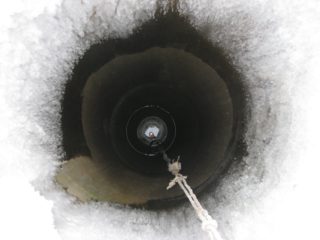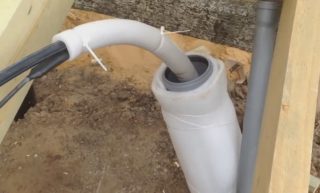For independent water supply, a well is most often used, from which water intake is made. There are two options for its operation - seasonal and year-round. If you intend to use the water intake during the winter cold, you need to think about insulation before the onset of frost in order to prevent interruptions in water supply, equipment failure and pipe rupture.
Why insulate a well for the winter

Thermal insulation of the intake structure is necessary for the following reasons:
- If the unit is equipped with an upper casing that is in a caisson, water in the open section of the pit can turn into ice and damage the pipeline. In wells that are not equipped with caisson pits, an ice plug occurs at the mouth of the mine near the surface of the soil.
- Placing the water table close to the surface can cause freezing and damage to the casing. In this case, the use of the well will become impossible.
- During severe frosts, the liquid can freeze on the suction section of the pipe, equipped with a check valve, and stop flowing to the pumping station as a result of the appearance of an ice plug.
- If surface pressure equipment is used, it also needs to be protected from the cold. After all, there is always water in it when it is turned off.
Warming is also necessary in the absence of owners for a long time. Without operation, the liquid in the casing and standpipes will freeze and water supply will become impossible.
Required tools and materials

When preparing the water intake for winter, a variety of heaters are used. Most of them are made on the basis of porous components with low thermal conductivity due to air cells in the structure. It can be expanded polystyrene, foamed polyurethane foam, expanded clay. Others include fibers that adjoin each other with air gaps. From this category, mineral wool is most often used, but improvised materials, for example, synthetic winterizer or straw, can also be used.
Insulation materials should not:
- absorb moisture or have a protective waterproof shell: when the absorbed liquid freezes, the insulation layer is destroyed;
- lose their qualities under pressure or movement of the soil, since when the material is flattened, its thermal conductivity increases;
- to be of interest or not to succumb to the influence of insects and rodents: in the summer, mice are able to pull the insulation along the nests, and in winter to make moves in it to warm up near warm pipes, as a result, the cold will directly flow to the pipeline.
Heating cables are also used. The advantage of this method is the controlled heating temperature of its shell. In modern versions with automatic regulation, the temperature conditions of individual sections of the wire surface change depending on the state of the environment.
Of the tools, you may need an electric drill, tape measure, screwdriver, level or building corner, hacksaw.
Self-warming

If the casing on the street is located at the same level with the ground or slightly higher, and the water intake is carried out using a submersible pump, you will need to insulate the well for the winter without an adapter and a caisson outside using a box made of wood, plastic, metal or brick. The structure is easy to build with your own hands. Insulation is poured or stuffed inside. It is advisable to equip the pipeline leading to the house with a heating wire.
Since water in motion is almost non-freezing, a 10-watt-per-meter cable is ideal for heating.
The caisson is made of brick or by pouring concrete mortar into the formwork. You can buy ready-made plastic or steel containers.
To insulate a well with a caisson on the street with your own hands for the winter, do the following:
- The caisson chamber is lined or wrapped in sheets of heat-insulating material so that ventilation is provided. To fix them, use polyurethane foam or glue.
- The inlet is closed with a sealed plastic cover.
- From above, the well is covered with heat-insulating material.
Insulation of the caisson is also possible from the inside. Then the insulation is mounted inside the chamber, and unfavorable external factors cannot affect it. But if the device is plastic, the outer insulation is better, as many polymers become brittle when exposed to low temperatures.
If you did not have time to insulate the well, you will need to adjust the operating mode of the system so that water is supplied in small portions, but as often as possible. The constant movement of underground water with temperatures above zero will prevent pipes from freezing.








